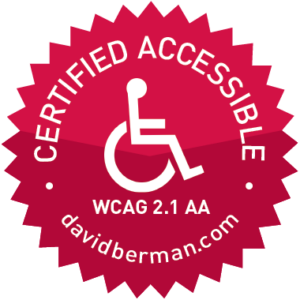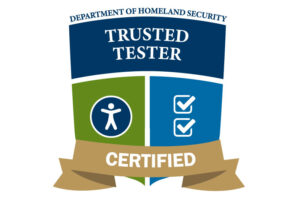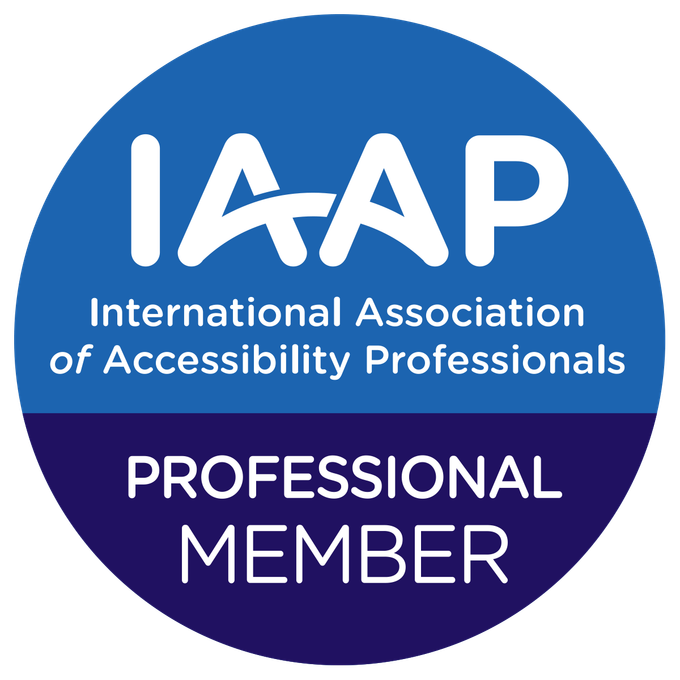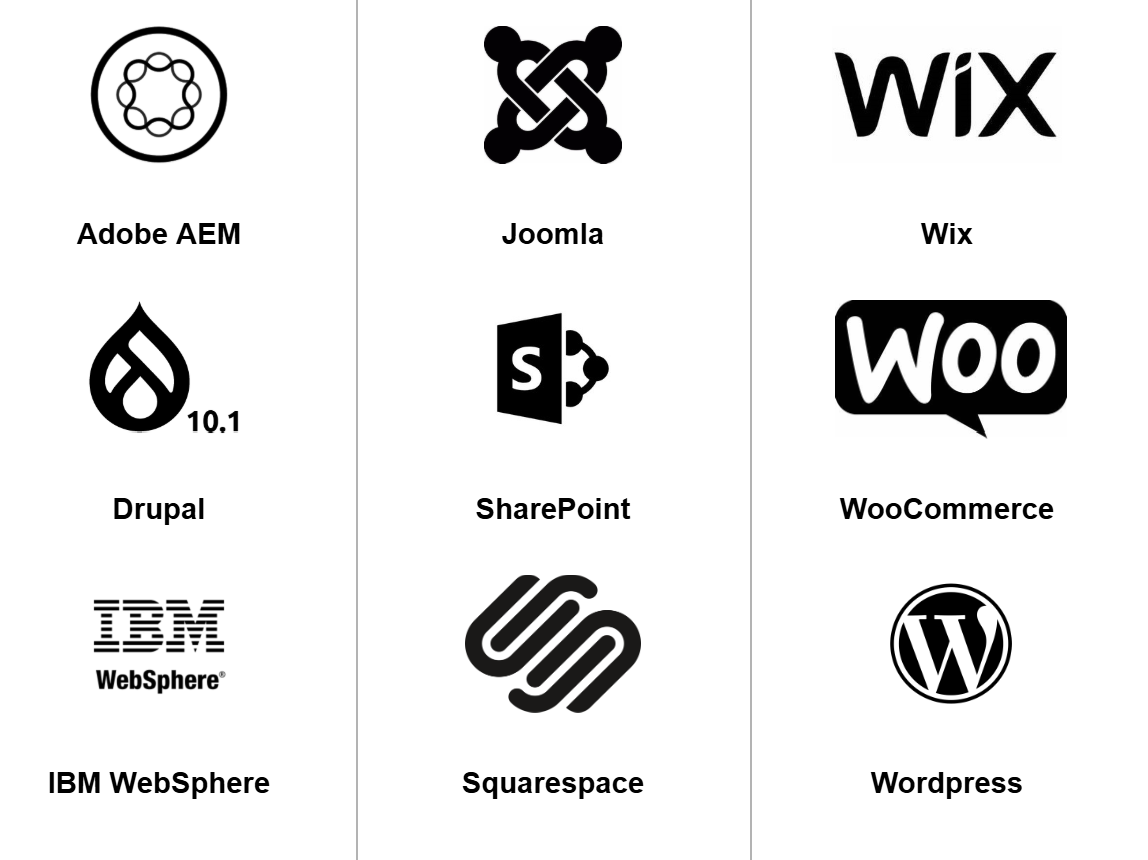Standards conformance: test, fix, certify, celebrate.
For the first time, there are more Canadians over 65 than under 15. Wellwise by Shoppers Drug Mart provides products and services that help people keep active, try new things, stay independent—in short, to age powerfully!
The Wellwise mission demanded a site that makes it easy for customers to find what they need, regardless of the varied ability levels of their diverse client base. This meant building it to the highest accessibility standards – a task tailor-made for the David Berman team. We plugged our specialized expertise into the Wellwise online development team, quickly falling in line with their demanding schedule.
Our accessibility engineers promptly got to work on a site audit, identifying any issues of non-compliance in a comprehensive report. This included carefully crafted recommendations to guide the Wellwise development team.
The Berman team provided full support, working in tandem with Wellwise day and night through dozens of phone calls and online screen sessions. We guided and coached them through every issue, working to their deadlines. When the Wellwise site was ready to serve their customers, we celebrated their commitment to excellence and marked the occasion with our congratulations. Their site now meets or exceeds all the WCAG 2.0 success criteria demanded by Ontario’s AODA regulations.
We’ve developed a precise, thorough and time-tested system that lets us guide our clients smoothly and confidently through what might otherwise be a complex and confusing process. We can become part of your development team, adding our deep knowledge of accessibility and its implementation to your vision. We work to ensure core issues such as security, e-commerce, branding and intrigue are never compromised. When everyone is satisfied with the result, your site is ready to meet the world.
It’s an approach that inspires confidence. By working closely with our clients, we become more than a service provider to you.
Accessibility Audit Services
Our recommended approach is for automatic testing of all web pages and documents, with manual testing of a representative sample across the website. Besides manual review of a sample of pages, all pages and documents will go through automatic testing.
“No Trade-offs” Inclusive Design™: Design teams are often understandably concerned that complying with accessibility regulations is going to result in products that disappoint both designers and users. Design teams fear that their site will lose its drama and intrigue, and their fear is understandable: we’ve seen horrible results when non-designer auditors dictate horrible compromises on an excellent site.
Our approach is refreshingly different: as a firm that specializes in inclusive design, we’ve developed a library of techniques that allow us to promise to you compliance with every Level A and Level AA success criterion in a way that will enhance the UX and SEO for your entire audience. We call this “No Trade-offs” Inclusive Design™: it ensures that the UX for all users need not be compromised by the accommodations for those living with disabilities. Rather, it will improve the design for all. At the same time, we will remain pragmatic regarding guaranteeing your deadlines. At least three accessibility experts will work on your audit, including peer review and certification steps involving fully certified professionals with the top digital accessibility certifications available worldwide (DHS Trusted Tester and all IAAP digital accessibility certifications).



Respect Group’s Sheldon Kennedy shares his experience working with David Berman Communications accessibility audit team
Transcript | Respect Group's Sheldon Kennedy shares his experience working with David Berman Communications accessibility audit teamThis is a transcript of the video Sheldon Kennedy talks about David Berman Communications accessibility partnership.
(A man in a black suit and glasses faces the camera, and continues to do so throughout the video.)
Hi, I’m Sheldon Kennedy, co-founder of Respect Group. Respect Group is founded on principles of inclusivity. It is one of our key fundamental values in terms of what we believe in at Respect Group and the programs we offer. Having Respect Group accredited at this level means we are living up to our highest standard. We now know that every user, regardless of any disability they may be facing, will be able to access our program equally, and to us that is critical.
David Berman, communications, was a great partner for us to work with. We had a terrific experience. Their team was highly professional and detail-orientated and worked closely with us through every step of the process. They were quick to respond to questions and offered helpful solutions for areas that required improvements. They were very detailed, comprehensive in their audit which ultimately resulted in a great outcome.
We are proud to have achieved WCAG 2.1 conformance, and thank you to the Berman Team for helping us become certified accessible. Certified accessible, awesome.
[END OF TRANSCRIPT]Overview: “No Tradeoffs eAccessibility”
Our paradigm results in a “no trade-offs” approach to ensure that the UX for “typical” users is not compromised by accommodations for those living with disabilities. In fact, it will improve the design for all.
Phase 0 | Preliminary Analysis and Discovery
Research and discussion, covering areas such as: determining or confirming which legislative or regulatory standards apply and how often, legal strategy, information architecture, wireframes, and user experience design.
Phase 1 | Conformance Evaluation / Findings Reporting
Compliance testing of representative product components, resulting in a comprehensive report identifying every issue that deserves attention. For each issue, we typically provide examples, repair suggestions, and techniques. Often there are many ways to fix the issue: we handpick the recommendation that will be most practical and sustainable, based on our experience with your team. This report serves as a clear guide to the development team on what needs to be done to comply. It includes the discovery of every issue required for conformance, as well as additional functional accessibility issues that will be optional for addressing.
Phase 2 | Collaborative Repair / Remediation Hypercare
We present our results, all gaps identified in Phase 1 that need closing, get repaired by the development team, accompanied by coaching by our team.
Optional Repeat of Phase 1 + 2
Re-auditing (if requested by the client and/or required for certification): we retest, resulting in a revised reporting, repairing by the development team, and any associated coaching; at additional cost.
Phase 3 | Certification
Expert conformance claim opinion letter showing the product’s level of conformance and/or compliance, once achieved, typically featuring a WCAG-EM* conformance report.
Phase 4 | Sustaining Accessibility
Making sure that the product remains accessible going forward, within a continuous improvement model of tools and techniques that we provide as part of our service.
Warranty (and litigation record)
We provide a 180-day warranty on all our deliverables. Clients have the option of extending this warranty for as long as they wish by choosing to put us on a consulting retainer.
In cases to our knowledge where accessibility has been litigated, our certification reports (and accompanying expert witness service) have a 100% success rate in cases that have gone to court.
Localization and languages
Our team has familiarity with working on accessibility challenges in over two dozen languages. We’ve studied legislation in over forty countries for the World Wide Web Foundation, and we work in multiple official languages every day. It is also important to know that the level of support available globally for assistive technologies varies from language to language. For example, we can advise you on how a certain screen reader is available in some languages but not others. You can either pragmatically accept this disparity while still always meeting or exceeding the minimum requirements … or we can work with you on specific programming techniques that can provide equal levels of accessibility across every language.
We’ll meet you on your chosen CMS (…or LMS!)
Our process works for every content management system and learning management system, and we conveniently have deep experience with preferred techniques depending on which you’re using.

Typical audit methodology
- Orientation to assets, and requirements analysis
- Assessment of pertinent standards and legislation:
- U.S. Revised Section 508 compliance auditing, including all functional performance criteria
- ADA Title III and ADAAA compliance auditing
- CVAA (21st Century Communications and Video Accessibility Act)
- EU’s EN 301 549 (2018), EN 301 549 (2019) compliance auditing, including all functional performance criteria (under the WAD Web Accessibility Directive)
- EU’s EAA (European Accessibility Act)
- ACA (Accessible Canada Act)
- Government of Canada Standard on Web Accessibility/compliance auditing
- AODA IASR 191/11 compliance auditing
- Australia’s DDA (Disability Discrimination Act)
- Japan’s JIS X 8341-3, JIS X 3241-3
- New Zealand’s NZG WS 2.0
- Norway’s UU Section 14
- Qatar’s eAccessibility Policy
- UK’s Equality Act of 2010
- UK’s Public Sector Bodies (Websites and Mobile Applications) Accessibility Regulations 2018 (PSBAR)
- Pertinent WCAG compliance auditing
- 25 WCAG 2.0 Level A success criteria
- 13 WCAG 2.0 Level AA success criteria
- 30 WCAG 2.1 Level A success criteria, if applicable
- 20 WCAG 2.1 Level AA success criteria, if applicable
- where we see any relevance to the client’s strategic goals, we may also informally explore from among the WCAG 2.0 and WCAG 2.1 Level AAA success criteria
- Web Accessibility Initiative – Accessible Rich Internet Applications (WAI-ARIA) 1.0 for web content
- Pertinent PDF/UA testing, according to the Matterhorn Protocol
Methodology for automated and manual testing
- automated examination of code (where available to us), content, and visual interface elements, for each success criterion
- comprehensive manual review of each success criterion, including (but not limited to):
- font treatments, sizing, and spacing
- Universal Design for Learning principles
- color usage and contrast
- content layouts, flow, and structure
- semantic (e.g., HTML) layout and structure
- content flow and navigability via non-keyboard input
- Interactive patterns for comprehension and readability
- error situations and recovery
- predictability and outcomes
- built-in accessibility features of each targeted operating system
- responsive design scenarios (including mobile device and desktop breakpoints and desktop)
- identify deficiencies
- provide recommendations (repair suggestions) within a proposed corrective action plan, including techniques (or code examples)
Accessibility assessment tools we use
-
- AChecker
- Acrobat Pro for Windows and macOS, including Acrobat Pro Full Accessibility Checker
- Adobe LiveCycle Designer / Adobe AEM Forms
- Android Emulator
- Android TalkBack (Explore By Touch)
- Apple iOS Simulator (with Accessibility Inspector)
- AxesPDF QuickFix
- Blackberry Screen Reader
- BrailleBack for Android
- CommonLook Office, Global Access, CommonLook Clarity
- Compliance Sheriff
- Colour Contrast Analyzer
- Dragon Naturally Speaking Professional
- Equidox
- Eyes-Free Keyboard for Android
- FireEyes
- Foxit PhantomPDF
- Google Accessibility Scanner for Android
- Hacker’s Keyboard for Android
- HP QuickTest Pro
- JAWS
- JAWS Inspect
- Lynx
- Kofax / Nuance Power PDF Advanced
- Kurzweil 1000 and 3000
- Microsoft Accessibility Insights for Web
- Microsoft Office, including the Microsoft Office Accessibility Checker
- Monsido
- NVDA
- Orca (Linux)
- PAC (1.3, 2.0, 3.0)
- PEAT
- QREAD for Windows
- SiteImprove
- TTY
- Vischeck
- Voice Dream Reader (iOS)
- VoiceOver (iOS, macOS)
- VoiceView (FireOS)
- WebAim WAVE
- W3C validation suite
- Window-Eyes
- Windows Narrator
- Zimmerman Low Vision Simulation Kit
- ZoomText (Windows, macOS)
… and other popular assistive technologies (including keyboard-only functionality)
Glossary
- WCAG-EM: Since 2015, the gold standard for WCAG auditing and reporting is an evaluation methodology called “WCAG-EM”. (David helped perfect this standard in his role as Invited Expert to the W3C, the publishers of the WCAG standard.) Those in the industry who are serious about the strength of their third-party validation of regulatory compliance have a policy of requesting that their accessibility audits and reporting meet or exceed the WCAG-EM standard.
- WCAG 2.0: To reach WCAG 2.0 Level A compliance, a product must comply with 25 Level A success criteria. To reach WCAG 2.0 Level AA compliance, a product must comply with the Level A success criteria as well as the 13 Level AA success criteria. To reach WCAG 2.0 Level AAA compliance, a product must comply with the Level A and AA success criteria as well as the 23 Level AAA success criteria.
- WCAG 2.1: WCAG 2.1 was finalized in 2018, though much digital accessibility legislation worldwide still references WCAG 2.0. Examples of legislation that already target WCAG 2.1 AA are ADA Title II, the EU’s WAD and EAA, and Manitoba’s AMA. WCAG 2.1 is made up of all of the existing WCAG 2.0, plus 17 additional success criteria (5 more Level A, 7 more Level AA, and 5 more Level AAA). The new success criteria mainly address mobile and touch devices and other evolutions of technology since 2008 when WCAG 2.0 was released. WCAG 2.1 also addresses cognitive challenges better than WCAG 2.0 did.
- WCAG 2.2: WCAG 2.2 was finalized in 2023, though most digital accessibility legislation worldwide still references WCAG 2.0 or WCAG 2.1. The UK was the first region to have a WCAG 2.2 deadline (which was in October 2024) WCAG 2.1 is made up of all of the existing WCAG 2.1, plus 9 additional success criteria (2 more Level A, 4 more Level AA, and 3 more Level AAA) while deprecating Level A success criterion 4.1.1.
“David Berman and his team are the go-tos. The best I’ve worked with.”
Steve Croy
![]()
The Thumbs Up / Thumbs Down accessibility audit package | $895
WCAG 2.0 or 2.1? Is it level A, AA or AAA? Are you unsure or puzzled about what compliance looks like for your (or your client’s) website or app? Why not consider our $895 entry-level “thumbs up / thumbs down” standalone audit package? We will:
- interview you and your colleagues
- identify what regulatory requirements apply to the sites or apps
- familiarize ourselves with your product
- perform a summary of technical digital accessibility evaluation
- assess whether they pass the cited standards/regulations or not
- provide a formal expert opinion statement signed by a certified expert (CPWA, WAS, CPACC, ADS)
- based on the familiarity gained, we can then provide a proposal for a full audit if you wish, at no additional charge (which will include a $895 discount)
Or, would you prefer a full audit right away? Either way, let’s jump on a call!























